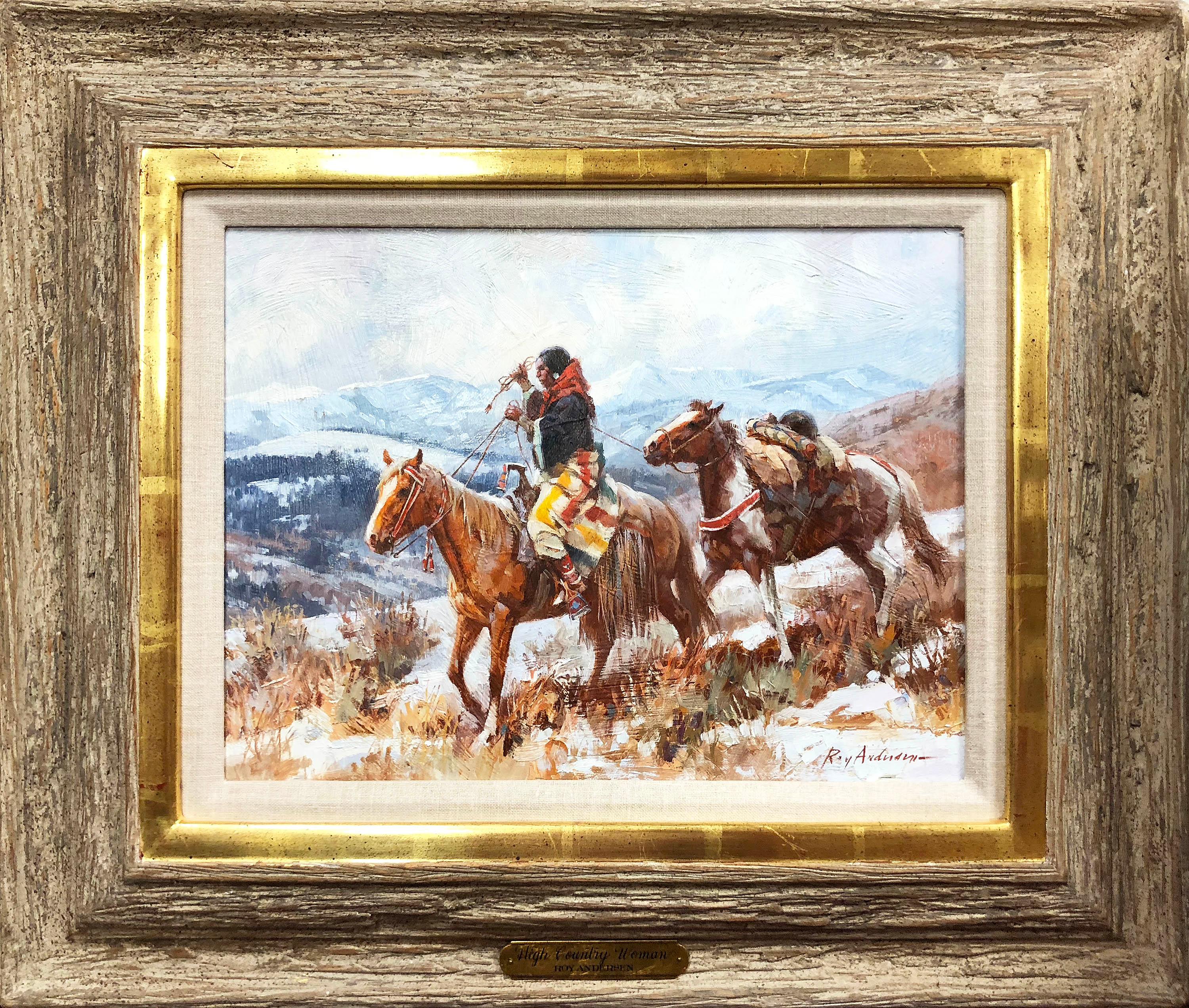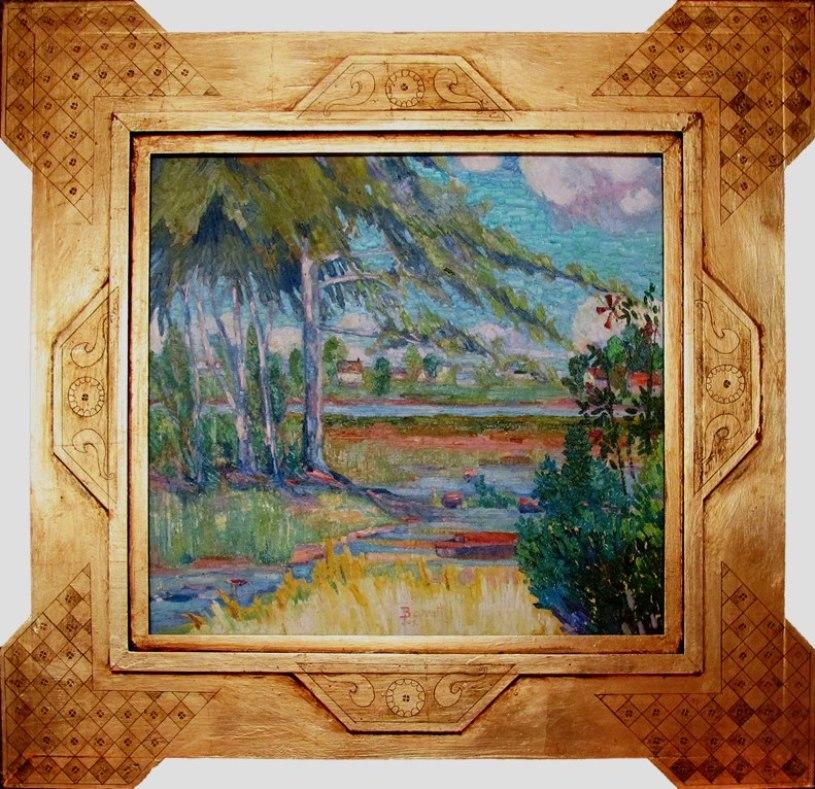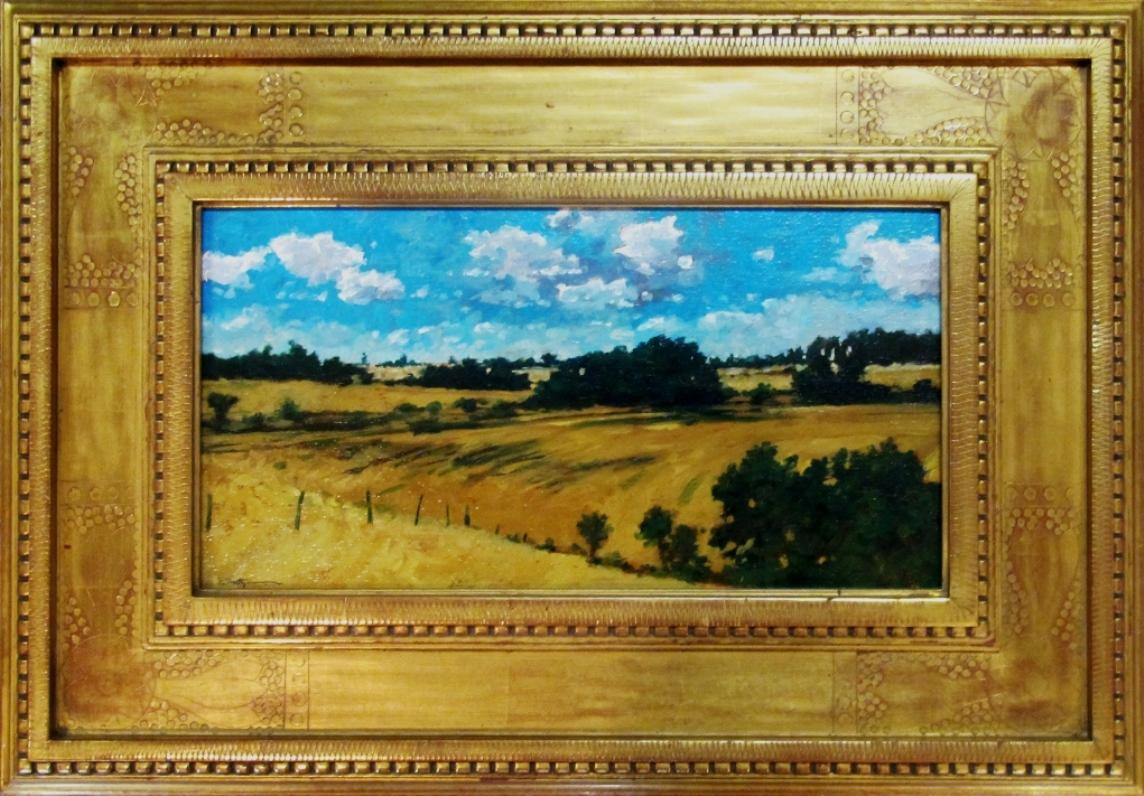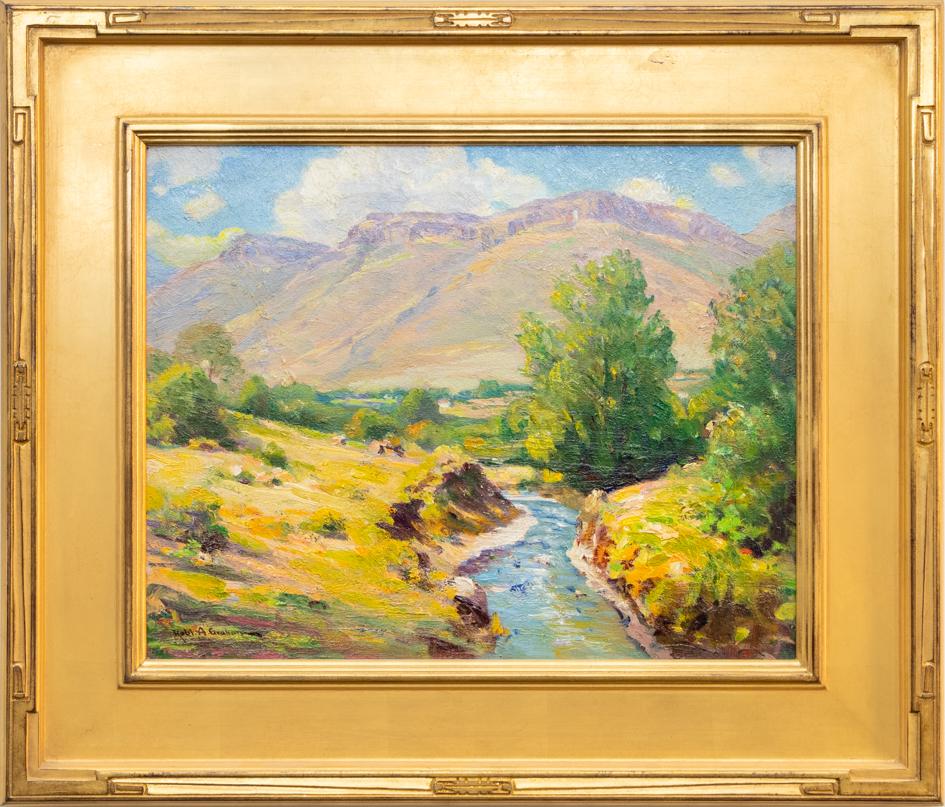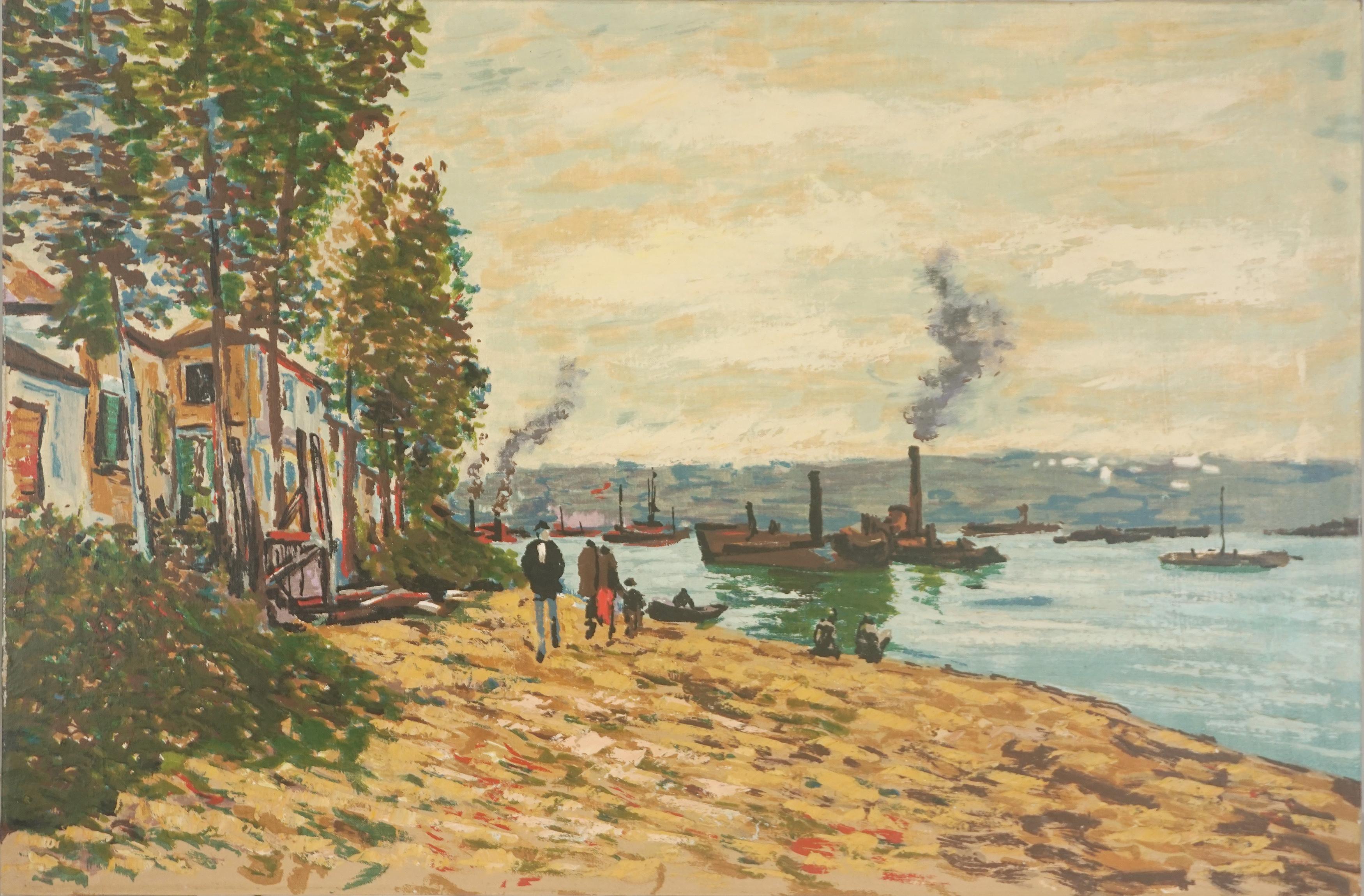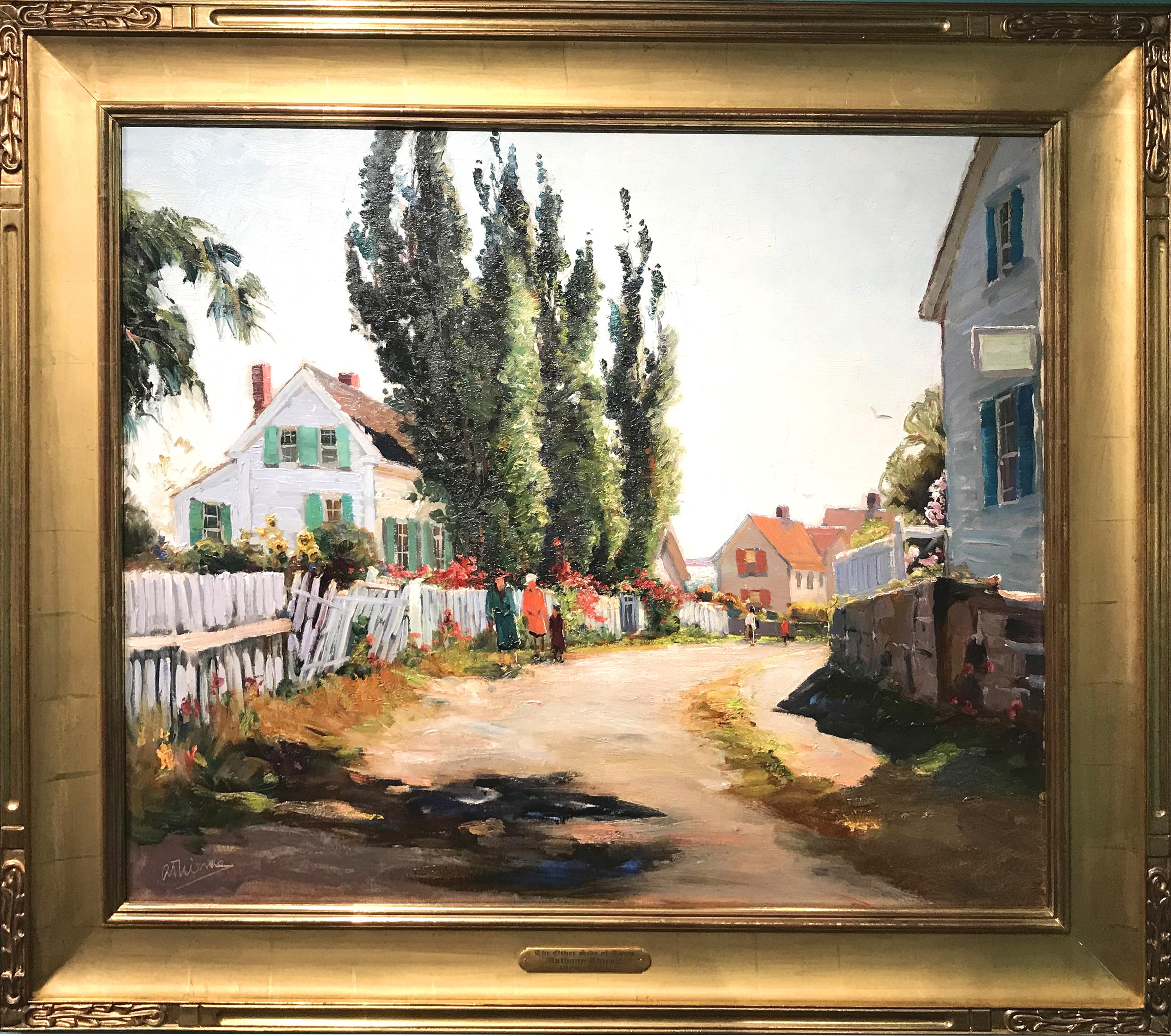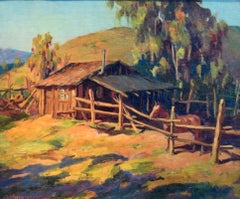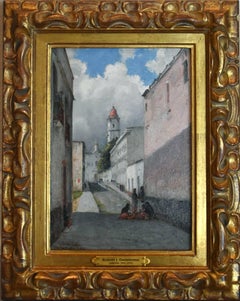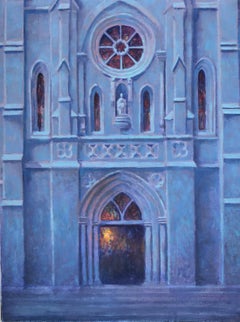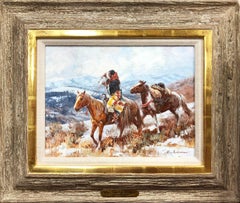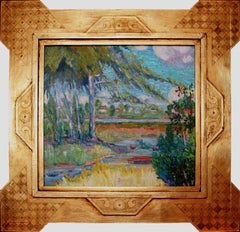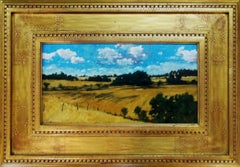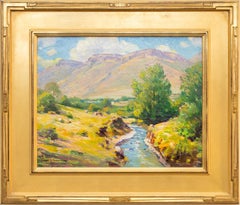Items Similar to "Ranch House"
Want more images or videos?
Request additional images or videos from the seller
1 of 7
R.P. Cochran"Ranch House"
About the Item
R.P. Cochran
Austin Artist
Image Size: 16 x 20
Frame Size: 23 x27
Medium: Oil
"Ranch House"
- Creator:R.P. Cochran
- Dimensions:Height: 23 in (58.42 cm)Width: 27 in (68.58 cm)Depth: 3 in (7.62 cm)
- More Editions & Sizes:Image Size: 16 x 20Price: $1,150
- Medium:
- Movement & Style:
- Period:
- Condition:
- Gallery Location:San Antonio, TX
- Reference Number:1stDibs: LU76935178652
About the Seller
5.0
Vetted Professional Seller
Every seller passes strict standards for authenticity and reliability
Established in 1974
1stDibs seller since 2017
95 sales on 1stDibs
Typical response time: 1 hour
- ShippingRetrieving quote...Shipping from: San Antonio, TX
- Return Policy
Authenticity Guarantee
In the unlikely event there’s an issue with an item’s authenticity, contact us within 1 year for a full refund. DetailsMoney-Back Guarantee
If your item is not as described, is damaged in transit, or does not arrive, contact us within 7 days for a full refund. Details24-Hour Cancellation
You have a 24-hour grace period in which to reconsider your purchase, with no questions asked.Vetted Professional Sellers
Our world-class sellers must adhere to strict standards for service and quality, maintaining the integrity of our listings.Price-Match Guarantee
If you find that a seller listed the same item for a lower price elsewhere, we’ll match it.Trusted Global Delivery
Our best-in-class carrier network provides specialized shipping options worldwide, including custom delivery.More From This Seller
View All"Home Corral" Very early Wieghorst California Western Painting awesome colors
By Olaf Wieghorst
Located in San Antonio, TX
Olaf Wieghorst
(1899 - 1988)
California, New York, New Mexico, Arizona, Texas Artist
Image Size: 20 x 24
Frame Size: 29.5 x 33
Medium: oil
1946
"Home Corral" California Olaf Wieghorst
Without a doubt one of if not the most colorful Wieghorst paintings ever done. Signed lower left. Titled on verso. Dated on verso.
In very nice condition. Has been professionally cleaned. Has very fine craquelure in the tree branches and a small spot below the horse that is really only visible if you are extremely close to the painting or with magnification. One of his finest paintings. Also please view my other Wieghorst from the same estate. I have included close up photos as well as photos taken in natural light, spot light and fluorescent lighting.
Olaf Wieghorst
(1899 - 1988)
California, New York, New Mexico, Arizona, Texas Artist
Image Size: 20 x 24
Frame Size: 29.5 x 33
Medium: oil
"Home Corral"
Dated 1946
Biography
Olaf Wieghorst (1899 - 1988)
Born in Viborg, Denmark, Olaf Wieghorst was a child acrobatic performer from the age of nine when he began appearances at Tivoli Theater in Copenhagen and later toured Europe. He also learned horseback riding working on a stock farm, and horses became a major focus of his admiration and later his painting.
In 1918, he arrived in the United States, having worked as a cabin boy on a steamer. He served in the 5th U.S. Cavalry on the Mexican border in the days of Pancho Villa. He later recalled a favorite horse from that period and said that riding through El Paso in 1921, the horse fell on his ankle and broke it. The outfit was heading to Douglas, Arizona, and not wanting to be left behind with his injury, he stayed on the horse which carried him all the way through the New Mexico desert on one of the hottest days of the year. The horse died during the night, having expended all his energy on saving Wieghorst. He later wrote that when the Cavalry discarded the use of horses, "they took the soul out of that great branch of the service" ("Widening Horizons").
He wandered extensively through the West sometimes on horseback, finding work in Arizona and New Mexico as a cowboy. Then he went to New York and served as a mounted policeman until 1944, spending most of his time on a horse named Rhombo patrolling the Central Park bridle paths and saving many people injury from runaway horses. He began painting in his spare time, and he was successful enough that his work was represented by the Grand Central Art Galleries of the Biltmore Hotel.
In 1944, he settled in El Cajon, California. His paintings include cowboys, horses, and Indians in landscape, but there is little if any collectible art of his done during his early days in the West. His primary output came after his return to California when he began painting cowboys and horses extensively. He did numerous horse portraits, spending time on ranches studying their unique personalities. He painted celebrity horses including Roy Rogers' Trigger, Gene Autry's Champion and Tom Morgan's stallion.
He was a large, powerful, handsome, and very personable man.
Source:
Kathleen Wade
Olaf Carl Wieghorst (1899-1988)
He arrived in the U.S. in 1918, joining the U.S.
Cavalry, & patrolled the Mexico border in New Mexico & Arizona . When he mustered out of the army, he drifted, ending up as a wrangler on
the Cunningham Ranch near Alma, New Mexico.
By the mid-twenties,
Wieghorst was in New York City, working as a mounted policeman - his
relationships with the many horses that were a part of his life became
the common denominator of his paintings. Living in California by the end
of WWII, he began a career that spiraled to success, in part due to his
engaging personality.
His paintings have appeared in numerous solo
& retrospective exhibitions including the National Cowboy &
Western Heritage Museum, Oklahoma City (1974), The Tucson Museum of Art,
Arizona (1981), & the San Diego Historical Society, California
(2002).
His work was the subject of the 1970 biography, "Olaf Wieghorst"
by William Reed...
Category
1940s Impressionist Landscape Paintings
Materials
Oil
"Toluca, Mexico" by Robert Onderdonk (1852-1917)
By Robert Jenkins Onderdonk
Located in San Antonio, TX
Robert Jenkins Onderdonk (1852 - 1917) San Antonio Artist Toluca, Mexico painting. Mexican Street Scene
Image Size: 11 x 8 Frame Size: 15 x 12 Medium: Oil "Toluca, Mexico" Circa 1912
This piece was painted in 1912 when Robert & his wife went to visit his son who was working in Mexico City at that time. Robert Onderdonk is considered the "Dean" of Texas Painters.
Robert Jenkins Onderdonk (1852 - 1917)
Robert Jenkins Onderdonk is noted for his landscape and portrait paintings and also for his fine art teaching.
Onderdonk was born in Catonsville, Maryland in 1852. He was the father of Robert Julian Onderdonk and Eleanor Rogers Onderdonk, also distinguished Texas artists. He received an academic education at the College of St. James, Catonsville, followed by studies at the National Academy of Design in 1872 under the instruction of Lemuel Everett Wilmarth. In 1875, Onderdonk attended Art Students League of New York and received instruction from Walter Shirlaw, James Carroll Beckwith and William Merritt Chase.
Onderdonk moved to San Antonio, Texas in 1878 where he made a living teaching and selling his paintings. In 1889 he moved to Dallas, where he painted several portraits for the Huburt Portrait Company, followed by employment with the Art Students League of Dallas. In 1896, Onderdonk returned to San Antonio, Texas where he continued to paint until his death in 1917.
Onderdonk was a member of the Allied Artists of America; Salmagundi Club, New York, and the San Antonio Art League. Exhibitions included the Annual Exhibition of the State Fair of Texas, Dallas; Dallas Art Association; Louisiana Purchase Exposition, St. Louis; Annual Texas Artists Exhibition, Fort Worth; Annual Exhibition, National Academy of Design, New York, and the San Antonio Art League.
Source:
John and Deborah Powers, "Texas Painters, Sculptors, and Graphic Artists"
Robert Jenkins Onderdonk was born at St. Timothy's Hall, Catonsville Maryland, in 1852. He had a very thorough academic education and was always sketching family members, classmates and landscapes on the back of his school books. This sketching ethic was a process he subscribed to his entire life, always carrying a sketch book with him where ever he went, like a camera of today.
Deciding to make art his profession, Robert moved to New York. He was not only a part of the academic beginnings of American art while studying in New York at the renowned National Academy of Design in 1870, but also one of the first student members, under the instruction of Lemuel Everett Wilmarth, at the Arts Students League.
At the League, Robert also studied and honed his craft with other teachers including Walter Shirlaw, William Merritt Chase and James Carroll Beckwith. Some of his classmates included: George Inness, Jr., Frederick Stuart Church, John Henry Twachtman and a Texan from San Antonio named Edward Grenet. Robert was lured to Texas in 1879 by his childhood friend and rancher, William Negely and by stories he read in the tabloids of the day that touted Texas as the "Promised Land."
Robert found the light, people and atmosphere of San Antonio agreeable and quickly settled in. He soon met a fellow Texas artist, Emily Gould, whom he married in 1881. They lived with her parents in a house called "Bella Vista" throughout their lives. The house was two miles north of town, had a wonderful view of the city and still stands today. Here Robert lived and taught art classes, painted portrait commissions, landscapes, still lifes and supported his family. Some of his students, who later became well-known Texas artists, were Mary Bonner, Seymour Thomas, Edward D. Eisenlohr, and Rolla Taylor. Robert worked hard and encouraged his students to do their best.
Robert was part of and organized several of the first art clubs in Texas, further helping to develop an interest in Texas art in the State and nationwide, but also giving Texas and American artists places to display their works, win awards and achieve much needed recognition. He helped organize "The Brass Mug Club," a revered group of San Antonio artists that met on Sundays to enjoy friendship and go into the Texas Hill Country and paint. Members included Julian Onderdonk (Robert's son), José Arpa, Leo Cotton, Rolla Taylor, Tom Brown and Ernst Raba.
In 1912, Robert and Julian were involved in the organization of the San Antonio Art League, the first important art organization in Texas with the mission to establish a free public gallery in San Antonio with exhibitions, lectures and classes in art. Later, larger exhibitions that needed more room due to the extreme popularity of the League and its awards were held at the Witte Museum in San Antonio.
While living in Dallas from 1889 to 1895, and in order to obtain commissions, Robert organized the first Dallas art school, the Dallas Arts Students League, where he was president and instructor. In 1905, Robert was chosen to select artists from New York and Texas to be represented and judged at the Dallas Fair, which later became the State Fair of Texas.
In 1901, Robert was commissioned by well-known Texas historian and writer, James T. DeShields, to paint a large historic painting of the Alamo battle. He used his family, friends and fellow artists for this painting, including his son. Robert even put himself in the painting, as one of the Alamo Defenders, taking a mortal shot from the enemy and falling backwards. The painting took three years to complete. The Fall of The Alamo was first exhibited at the St. Louis Worlds Fair in 1904.
Among Robert's important commissions were the illustrations he provided for feared Texas gunfighter John Wesley Hardin's autobiography, The Life of John Wesley Hardin, published in 1896. This was a courageous task by Onderdonk considering that Hardin, who had killed over forty men, was the fastest gun in the West, East, North or South.
When Robert Jenkins Onderdonk died in 1917 at the age of sixty-five at his home in San Antonio, he was known as the dean of Texas artists. His contributions to Texas art and the early artists of Texas were well-known and well-respected.
Written by Peter C. Rainone, as published in American Art Review, June 2008
Robert Onderdonk was educated at the College of St. James in Maryland where his father was headmaster. At 20, he studied for two years at the National Academy of Design, under Wilmarth, then at the Art Students League under Shirlaw and Beckwith. He was the private pupil of A H Warren, a tonalist painter known as "the Corot of America." In 1878, he concluded his art studies with William Merritt Chase.
To earn funds for a European trip he never made, Onderdonk was persuaded to establish his studio in San Antonio in 1878. By 1881 he was married, living near Pedro Spring, and taking the mule car to his studio in the city. He always carried with him a wood panel such as the top of a cigar box so he could paint small scenes. For his studio classes he charged $3 per month. He moved to Dallas in 1889, when offered $100 a month to teach. After his father-in-law died in 1896, he returned to San Antonio where he remained except for a trip to St. Louis in 1899 to try commercial painting on tile. Not ambitious, not robust, not careful in signing his paintings, he received commissions for hundreds of portraits without being able to earn a suitable living. Even his epic "Davy...
Category
1910s Impressionist Landscape Paintings
Materials
Oil
"San Fernando Cathedral Moonlight" San Antonio Texas Landmark
By Randy Peyton
Located in San Antonio, TX
Randy Peyton
(1958 - present)
San Antonio Artist
Image Size: 16 x 12
Frame Size: 19 x 15
Medium: Oil on Canvas
" San Fernando Cathedral Moonlight"
Biogra...
Category
Early 2000s Impressionist Landscape Paintings
Materials
Oil
"Brackenridge Park" San Antonio Texas.
By Jose Arpa
Located in San Antonio, TX
Jose Arpa (1858-1952) San Antonio Artist Image Size: 18 x 24 Frame Size: 21 x 27 Medium: Oil Circa 1920s "Brackenridge Park" San Antonio Texas.
Biography
Jose Arpa (1858-1952)
Born in Carmona, Spain, José Arpa y Perea was known as "The Colorist Painter" of figures and landscapes, especially in Texas where he brought a fresh approach to San Antonio painting in his bright, sunlit local scenes. He was also an etcher, illustrator, and muralist as well as an art teacher, and he started and ended his career in Spain. His subjects include the Grand Canyon of Arizona.
Please visit our 1stdibs storefront to view more of our fabulous goodies.
He began his art study as the pupil of Eduardo Cano de la Pena at the Academy of Fine Arts in Seville and then spent six years in Rome followed by extensive travel through Africa and Europe. His reputation was solid enough that the Spanish government sent four of his paintings as part of the exhibition to the 1893 World's Columbian Exposition in Chicago.
In 1894, as an illustrator, he accompanied a Spanish army expedition to Morocco where the Spanish had been defeated by Rifi tribesmen. In the mid-1890s, he was brought to Mexico City, reportedly by a special Mexican naval vessel, to head the Academy of Fine Arts, but declined the position once he understood the responsibilities. Instead he joined one of his Spanish schoolmates and went to his home in Puebla, Mexico, where his use of bright colors earned him the name of "Sunshine Man." He became close to the children of this man, and in 1903, accompanied them as a guardian to school in San Antonio.
After twenty years of traveling in Spain, Mexico, the Southwest, and South America, Arpa settled in 1923 in San Antonio, Texas, where he became Director of the San Antonio Art School and painted bright, sun-filled landscapes. He taught landscape and portrait painting and was exceedingly prolific, and several San Antonio collectors accumulated large numbers of his works. Among his close artist friends were Robert and Julian Onderdonk, Tom and Joe Brown, and Charles Simmang. They were members of a San Antonio group who painted together and called themselves the "Brass Mug...
Category
1920s Impressionist Landscape Paintings
Materials
Oil
"The Tower Life Building" San Antonio Texas Study on Newsprint for larger work
By Randy Peyton
Located in San Antonio, TX
Randy Peyton
(1958 - present)
San Antonio Artist
Image Size: 24 x18
Frame Size: 25x19
Medium: Oil on Canvas over newsprint
Dated 2004
"The Tower Life Bui...
Category
Early 2000s Impressionist Landscape Paintings
Materials
Oil
"Morning Light on San Fernando Cathedral"
By Randy Peyton
Located in San Antonio, TX
Randy Peyton
(1958 - present)
San Antonio Artist
Image Size: 40 x 30
Frame Size: 41 x 31
Medium: Oil on Canvas
Dated 2005
"Morning Light on San Fernando ...
Category
Early 2000s Impressionist Landscape Paintings
Materials
Oil
You May Also Like
Old High Country Woman
By Roy Andersen
Located in Missouri, MO
Roy Andersen (b. 1930)
"Old High Country Woman"
Oil on Canvas
12 x 16 inches
21.5 x 25 inches framed
Known as a western painter, Roy Andersen did paintings of Crow, Cheyenne, and Apache Indians. He began his career living in Chicago and New York and working as an illustrator. He did numerous covers for Time Magazine including portraits of Albert Einstein and Prince Fahd. He also did illustrations for National Geographic magazine, and did a stamp series on Dogs and American Horses, and in 1984 and 1985, won Stamp of the Year Award. As a muralist, he has filled commissions for the National Park Service, the Royal Saudi Naval Headquarters, and the E.E. Fogelson Vistor Center at Pecos National Monument in New Mexico.
To pursue his talent for painting, Roy Anderson went West, living in Arizona and settling in Cave Creek. In 1990, he was voted official artist for Scottsdale's Parada del Sol, the "world's largest" horse-drawn parade commemorating the Old West.
Andersen grew up on an apple farm in New Hampshire and learned about Indian customs from his many hours spent at the Chicago Museum of Natural History. He is meticulous about being historically accurate in his paintings. Of him it was written: "There are no 'happy accidents' in an Andersen painting. He has a knowledge of his subject that is attained only through extensive research. You will not find an Apache medicine bag...
Category
Late 20th Century American Impressionist Figurative Paintings
Materials
Canvas, Oil
Price Upon Request
"Beyond the Delaware"
By Joseph Barrett
Located in Lambertville, NJ
Jim’s of Lambertville is proud to offer this artwork by Joseph Barrett (1936 – )
Joseph Barrett was born in Midland, North Carolina, in 1936 and studied at the Massachusetts Co...
Category
20th Century American Impressionist Landscape Paintings
Materials
Canvas, Oil
"Summer Skies"
By Peter Sculthorpe
Located in Lambertville, NJ
Jim’s of Lambertville is proud to offer this artwork by:
Peter Sculthorpe (born 1948)
Peter Sculthorpe was born in Ontario, Canada, in 1948. His talent was evident even as a child and developed rapidly in high school, where he was awarded an art scholarship in his senior year. He studied at the Pennsylvania Academy of Fine Arts, and the Hussian School of Fine Art under William Palmer Lear. He is a recipient of the Daisy Jamison Art Scholarship.
Sculthorpe's work is represented in private and corporate collections including General Electric, AT&T, DuPont, and Nabisco. His paintings are in the permanent collections of the Delaware Art Museum in Wilmington, Delaware; the William Penn Art Museum in Harrisburg, Pennsylvania; and the Brandywine River Museum in Chadds Ford, Pennsylvania.
He has presented his work in exhibitions including the American Watercolor Society, the National Academy of Design in New York, the Philadelphia Sketch...
Category
21st Century and Contemporary American Impressionist Landscape Paintings
Materials
Oil, Board
North Table Mountain (Landscape near Golden, Colorado), Early 20th Century Oil
By Robert Alexander Graham
Located in Denver, CO
Transport yourself to the picturesque landscapes of Golden, Colorado, with this breathtaking vintage oil painting on canvas by acclaimed artist Robert Alexander Graham. Dating back t...
Category
1920s American Impressionist Landscape Paintings
Materials
Oil
Mid Century Original Spanish Impressionist Fishing Village
Located in Soquel, CA
Mid Century Original Spanish Impressionist Fishing Village Scene with Figures
Spanish impressionist oil painting by A. Boneto (Spanish, 20th Century), circa 196Painterly impression...
Category
1960s Impressionist Landscape Paintings
Materials
Canvas, Oil, Stretcher Bars
The Other Side of Town
By Anthony Thieme
Located in Milford, NH
This colorful impressionist street scene possibly heading toward Pigeon Cove in Rockport was painted by well-known Dutch / American artist Anthony Thieme (188...
Category
Early 20th Century American Impressionist Landscape Paintings
Materials
Canvas, Oil
Recently Viewed
View AllMore Ways To Browse
A J Canham
A Trail In The Jungle Kartabo British Guiana
Adair Peck
Adolph Kronengold
Albert Gabriel Rigolot On Sale
Albert Hager
Albert Hencke Art
Aldo Salvadori
Alex Dzigurski
Alex Schaefer
Alexander Kellock Brown
Alfons Walde
Alfred Bryant Copeland
Alfredo Caldini
Alfredo Lobos
Alice Schille
Amanda Mcpaul
Amy Wynne
